This was when we actually entered the museum.
People and Dinosaurs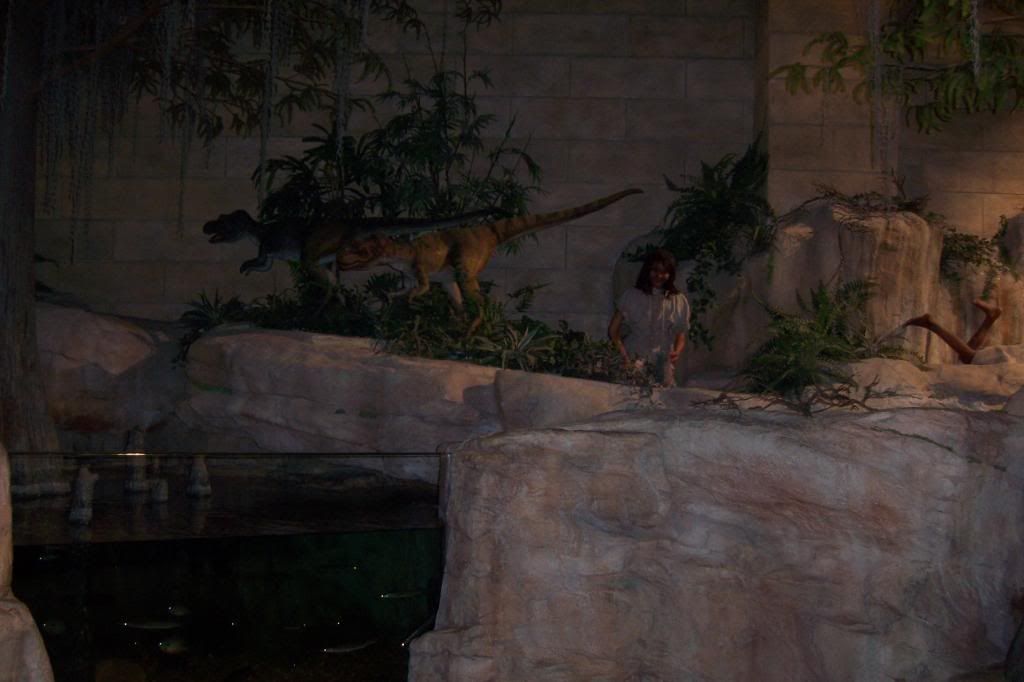
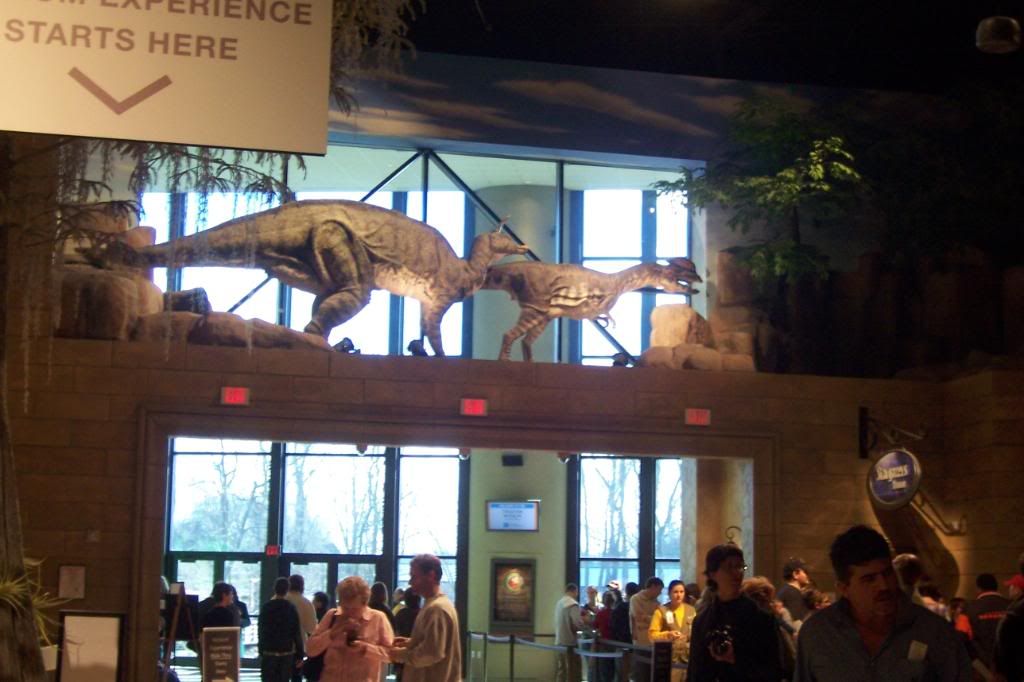
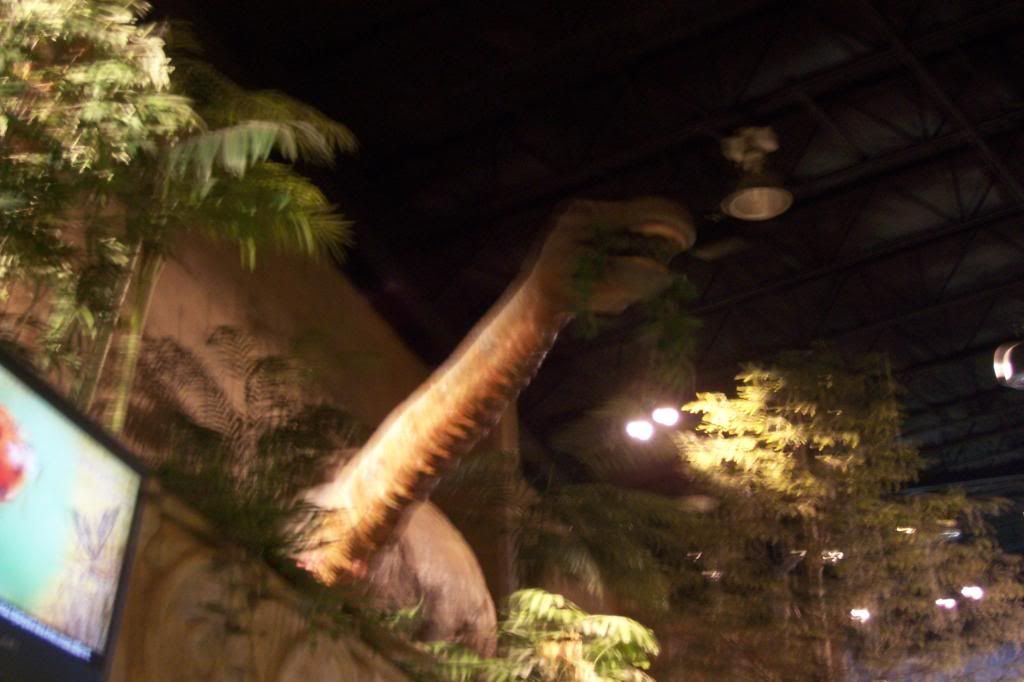
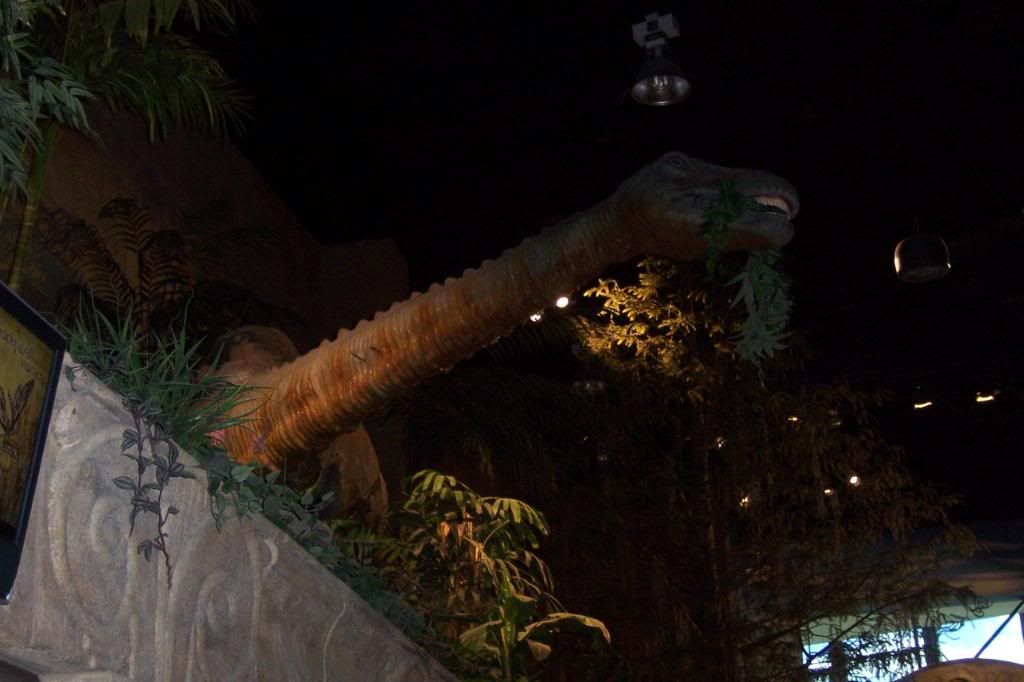

These are a little dark because the lighting in the area was not great. However, you get the idea. There are dinosaurs and people coexisting and no people are getting eaten by the carnivorous one.
Seven C's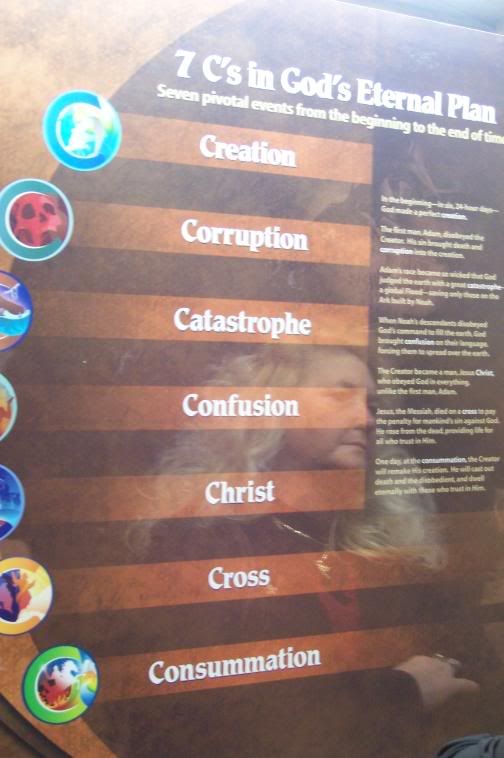
These are the seven C's of God's plan. They make an appearance in many parts of the museum, and they were mostly new to me from that perspective. The first four are treated in depth in the museum. Also, the women looking sadly into the window really shows how some of the people reacted to the museum.
Living Fossils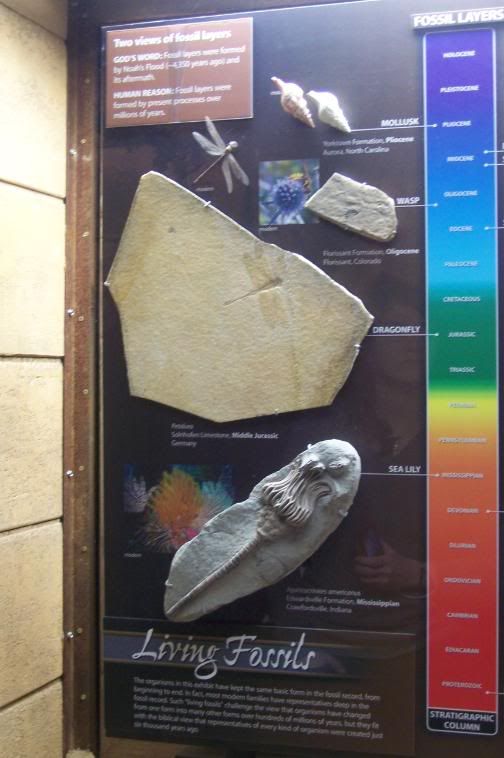

Living fossils display shows how some things have barely changed in "millions and millions of years" which proves that everything was created as it is today. I will discuss each of the examples in turn.
The oldest example are the stromatolites. As you may know, stromatolites are very important to scientists who study the origins or organisms. They are mats of blue-green algae (now usually called "cyanobacteria" because they are technically bacteria, not algae). Of course, we still have cyanobacteria today, but they are not in the exact same form as they were millions of years ago. These stromatolites let us know when there was first oxygen creating organisms on the planet, which helped to change the atmosphere into what we see today.
The next is the "Brittlestar". The current class is called Ophiuroidea. There are closely related to the starfish that everyone thinks of, but a separate class. Though these animals did diverge early on, and have not changed much in the time since the Ordovician, they HAVE changed, and the species then are not the same as those today.
Now that I look again, this is actually the answer to all of these organisms. Though they may have diverged long ago, there have been changes, whether they are obvious to us outside of their field or not (and possibly usually not). There is one thing I would like to add, though. They show that dragonflies diverged in the Jurassic, when they actually diverged 300 million years ago in the Carboniferous. Of course, they do not want to show the Carboniferous dragonflies which look to us strangely like our dragonflies, except that they were over 50 cm in wingspan. These huge dragonfly fossils tend to fly in the face of biblical thinking.
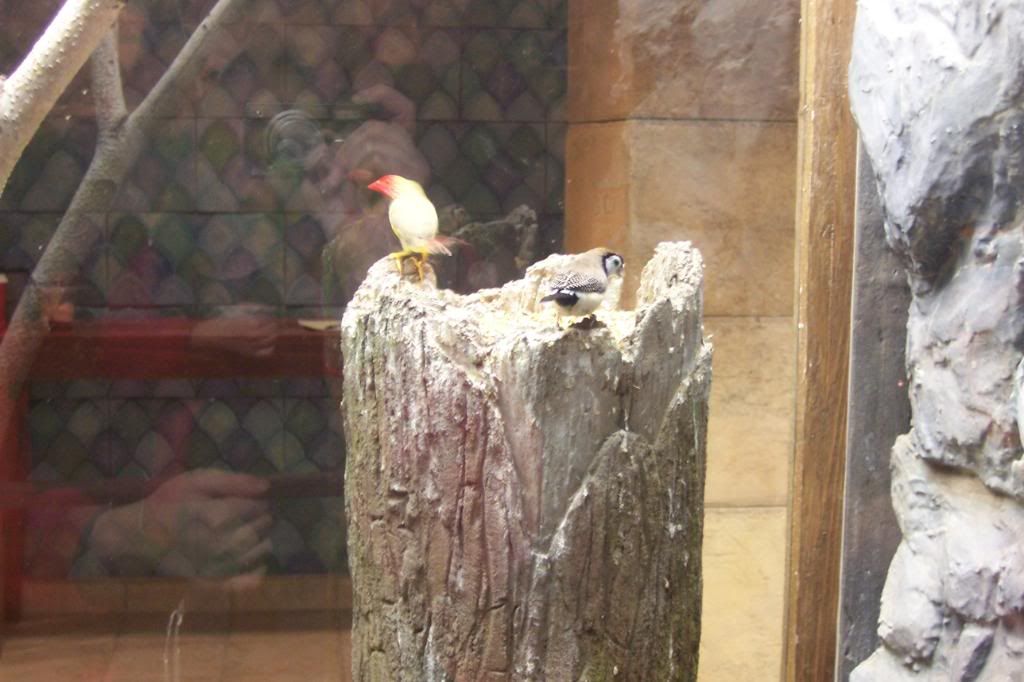
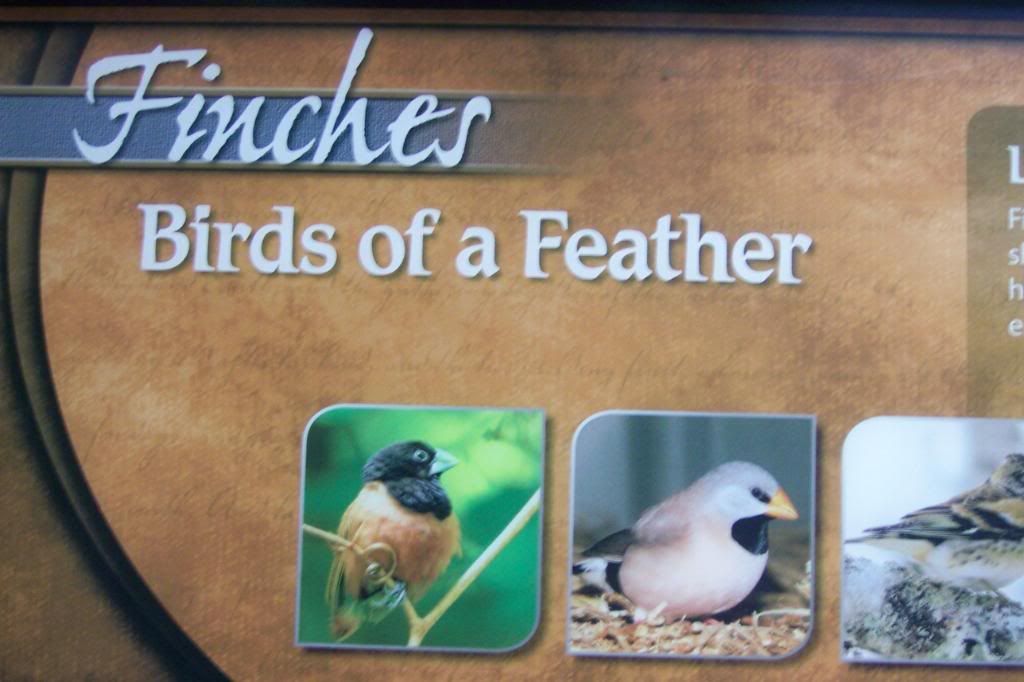
I was not surprised to see Finches as an example of Creation, since they are so often used by evolution scientists due to

There are many different species in many different environments.

There are certain birds that can interbreed. This is because species definitions get very complicated when it comes to birds. Even if a bird species can technically breed (which would make them biologically one species), they may have differing mating rituals which would cause them never to breed. There is clearly a miscommunication between scientists and others about the species concept and how it can be bent (especially in the light of new technology using DNA to determine what a species is).
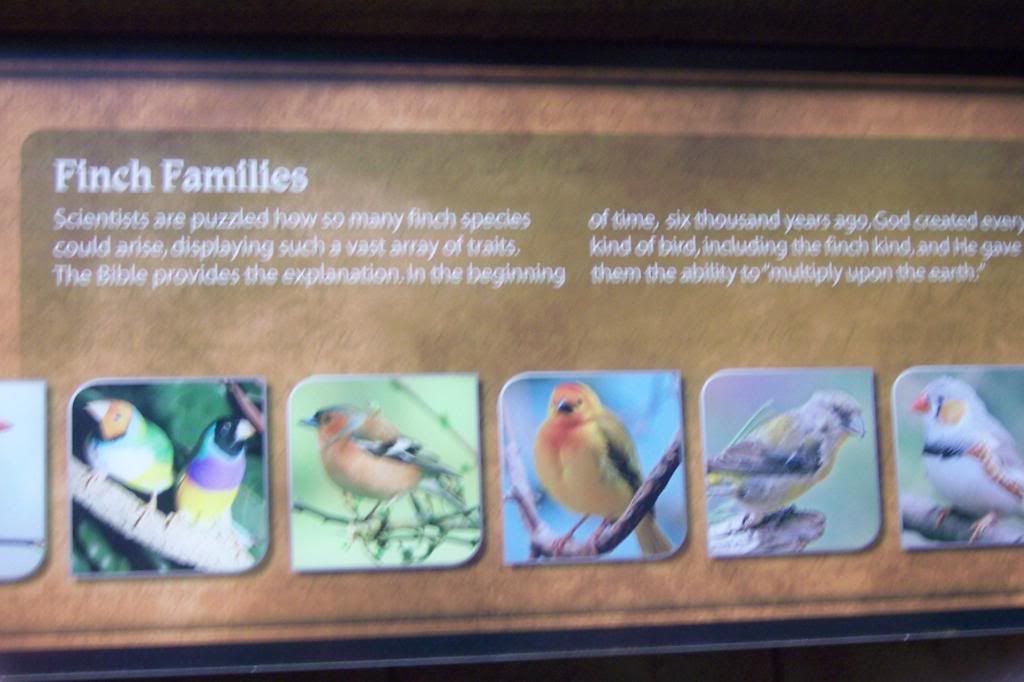
I do not know a scientist who is actually puzzled my variation. Variation is usually intriguing to scientists, because the next step is to determine how so much variation could have arisen in the given amount of time. Scientists use environmental factors (food, predation, competition) to discover how the animals could have arisen so many forms. I had heard the idea of the "kind" on the ark before, but I had not heard "multiply upon the earth" being skewed into the idea of variation being already implanted in the various organisms so that they could have become all the species on the planet. It turns out, however, that this is one of the big selling points of the museum, that this is how variation is possible.
Our Back Yard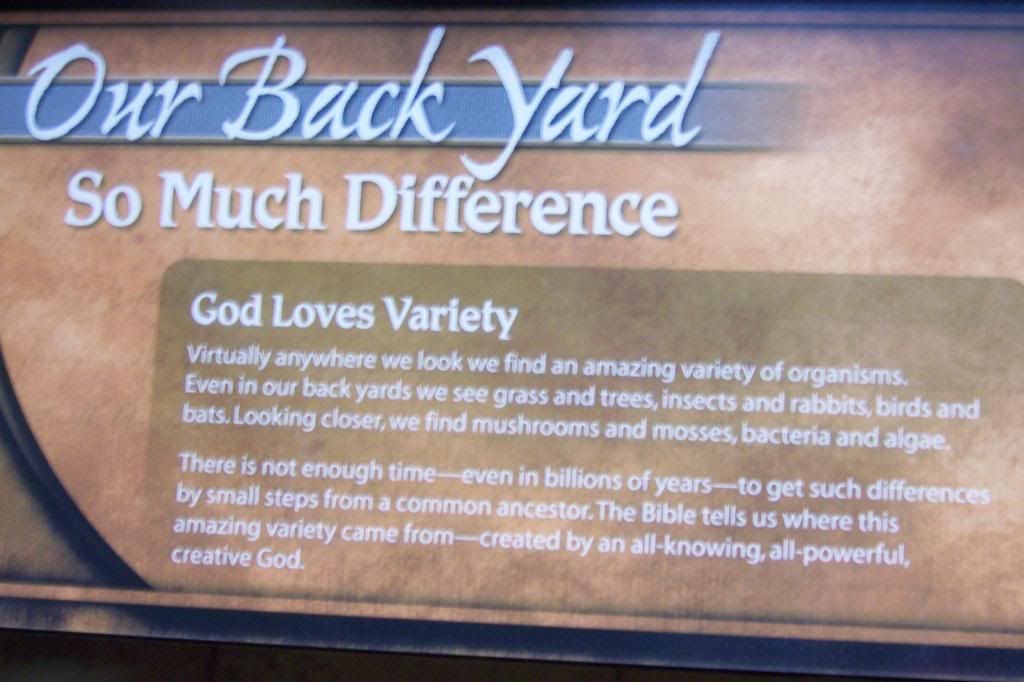
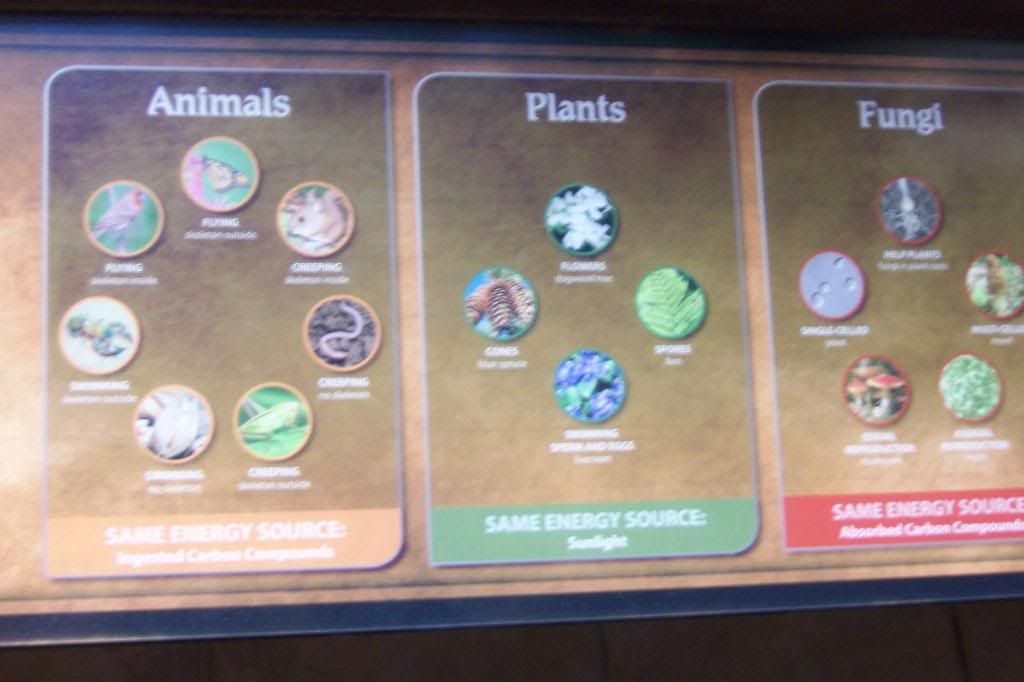

Obviously, there is a great deal of variety in the world. Of course, the claim that this all comes from small steps is not entirely accurate, though this is a common misconception.
Poison Dart Frogs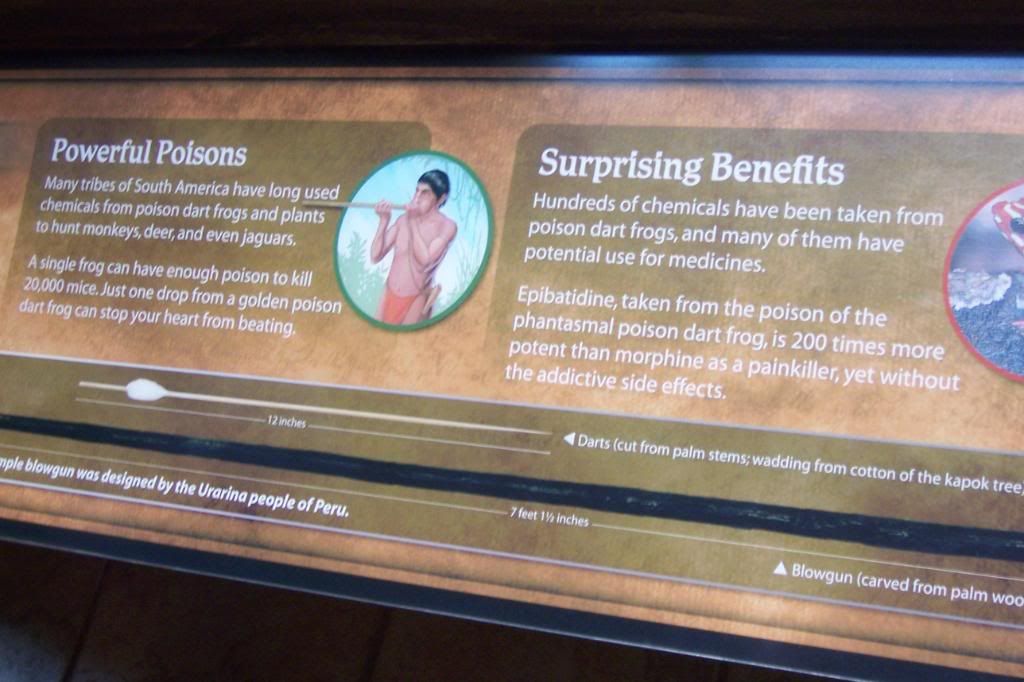
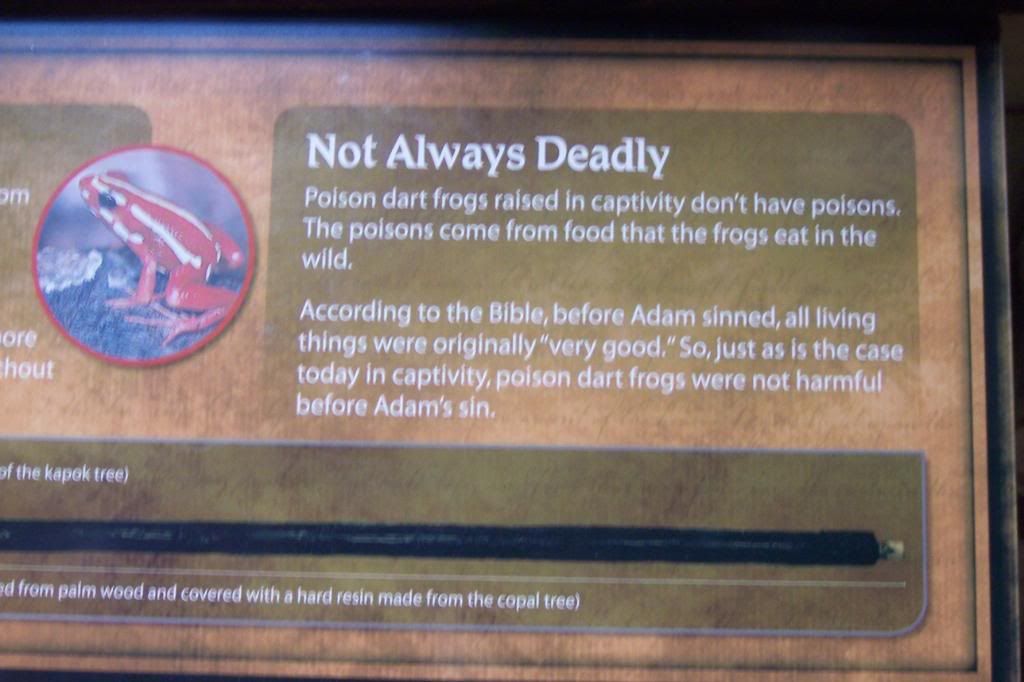
I could not get a good picture of the frogs because they were hiding. These frogs do have powerful poisons which have been shown to be beneficial in some instances. The museum does a good job of getting some educational information across along with the biblical stories. This doesn't mean that I am okay with it, but that is just how it is. Now here is also the first mention of the fall. When Adam sinned is when these frogs got their poison. There is actually an entire room later on devoted to this concept.
Chameleon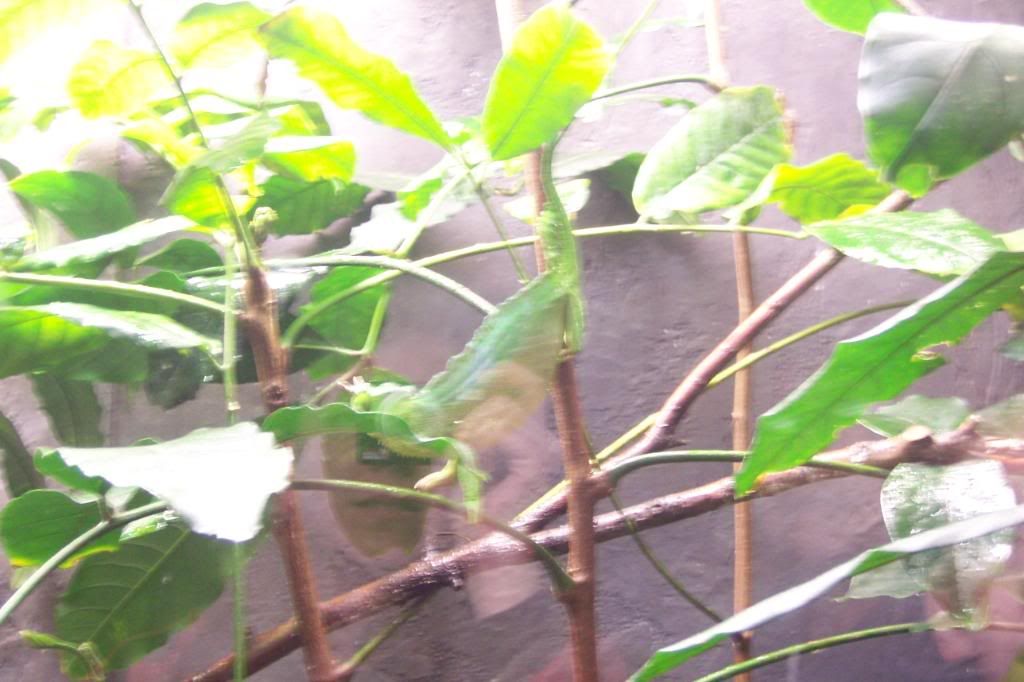
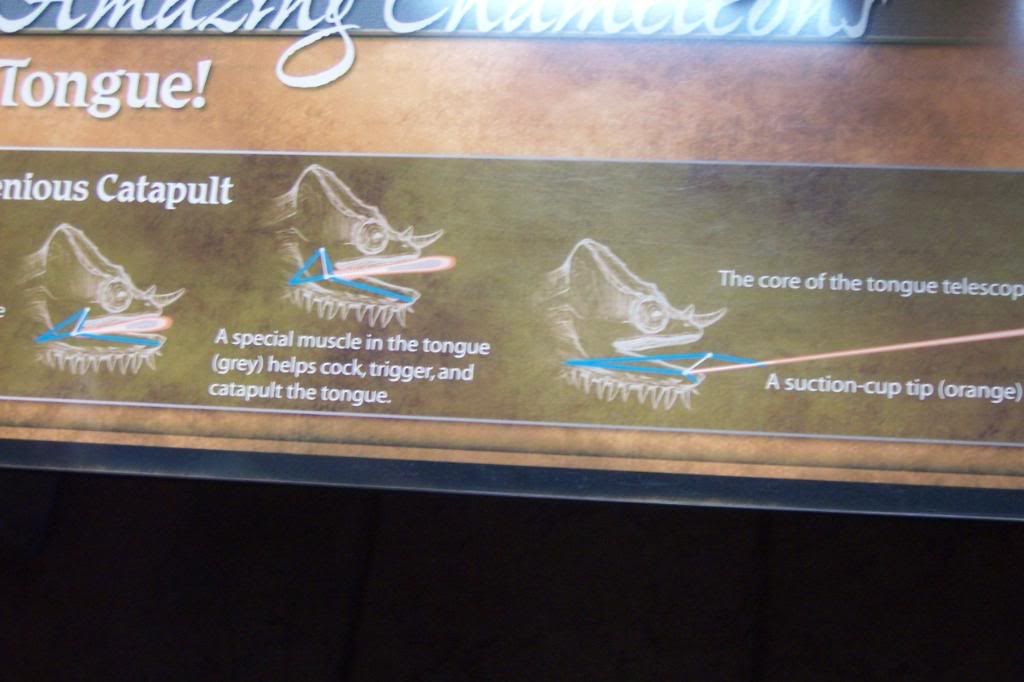
The chameleon is pretty sweet, we understand. There is really no explanation of why this is pertinent to Creation, but I believe the idea is one of "look at this cool thing God did". Also, kids love chameleons and I was beginning to see just how much this was set up for the kiddos...
No comments:
Post a Comment